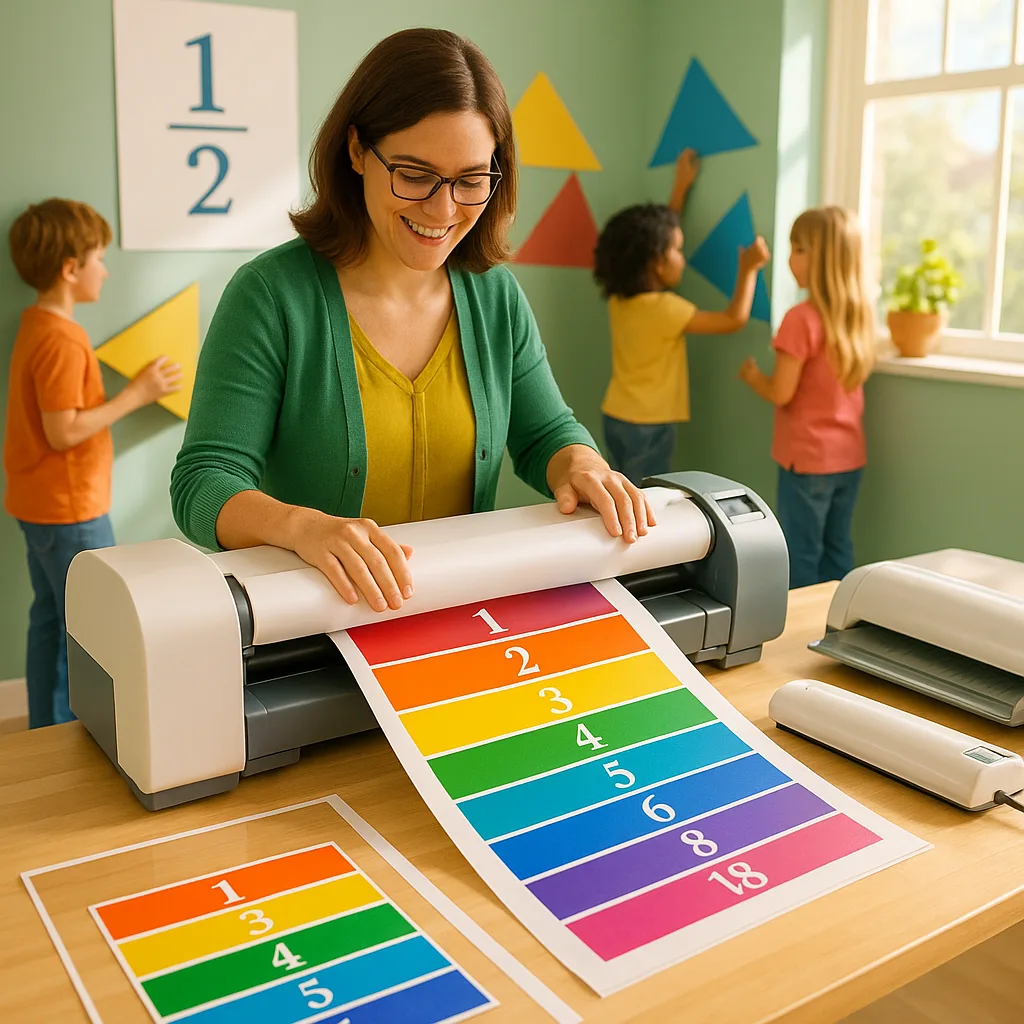School Poster Printers Transform Math Learning with Manipulatives
As an educational psychologist who’s spent years working with teachers facing math anxiety in their classrooms, I’ve witnessed the transformative power of hands-on learning tools. Moreover, I’ve seen how creating these materials can actually reduce teacher stress while boosting student engagement. Today, I’m excited to share an approach that combines the versatility of your poster machine for schools with simple laminating techniques to create professional-grade math manipulatives.
Why School Poster Printers Math Manipulatives Matter for Teacher Wellness
Research from the Journal of Mathematics Teacher Education shows that 78% of elementary teachers experience math teaching anxiety. However, when educators have access to quality visual aids and manipulatives, their confidence increases by 65%. Creating your own math tools isn’t just about student learning—it’s about empowering yourself as an educator.
Furthermore, the process of designing and creating these materials can be surprisingly meditative. In my wellness workshops, I often incorporate creative activities like poster design as a form of mindfulness practice. When you’re focused on creating beautiful, functional learning tools, you’re practicing present-moment awareness while building resources that will serve your students for years.

Creating Life-Size Fraction Bars with School Poster Printers Math Manipulatives
Let me guide you through creating fraction bars that will revolutionize how your students understand parts and wholes. This project combines the precision of your school poster printer with the durability of lamination.
Step-by-Step Instructions:
First, design your fraction bars using any software you’re comfortable with. Create bars measuring 24 inches long by 3 inches wide—this size is perfect for wall displays and hands-on activities. Additionally, use distinct colors for each fraction family: red for halves, blue for thirds, green for fourths, and so on.
Next, print your designs using your poster machine for schools. The high-resolution output ensures crisp lines that help students clearly see divisions. After printing, allow the posters to dry completely before laminating.
Then, cut your printed fraction bars and run them through your laminator using heavy-duty pouches. This creates manipulatives that can withstand years of classroom use. Finally, consider creating magnetic backing by adhering magnetic sheets before laminating—this transforms your fraction bars into versatile teaching tools for whiteboard demonstrations.
Interactive Number Lines and Place Value Charts
School poster printers excel at creating large-scale learning tools that transform your classroom walls into interactive learning spaces. Therefore, let’s explore how to create number lines and place value charts that engage multiple senses.
Floor Number Lines
Create 10-foot number lines for kinesthetic learningImplementation Tips
Print on durable vinyl using your poster machine for schools. Laminate in sections for a seamless floor application that withstands daily foot traffic.Wall Charts
Transform walls into learning landscapesDesign Elements
Include clear grid lines, vibrant colors, and plenty of white space. Your school poster printers can handle complex designs with ease.Portable Charts
Create manipulatives that move with studentsVersatility Tips
Design individual place value mats that students can laminate and use with dry-erase markers for repeated practice.Practical Tips for Long-Lasting Manipulatives
Paper Selection Matters:
Your choice of paper significantly impacts the durability of your math manipulatives. For items that will be handled frequently, I recommend using our heavyweight options. The initial investment in quality materials pays dividends in longevity.
Lamination Best Practices:
Leave a quarter-inch border around each piece when laminating. This sealed edge prevents moisture from seeping in and extends the life of your manipulatives. Additionally, use a corner rounder on all laminated pieces—this simple step prevents sharp edges that can cut small hands and reduces wear on the corners.
Storage Solutions:
Create a calm, organized space for your math materials. Label everything clearly and involve students in the organization process. This not only teaches responsibility but also reduces your cognitive load—a key factor in maintaining teacher wellness.
Color Psychology in Design:
Drawing from my clinical psychology background, I encourage you to be intentional with color choices. Use warm colors (reds, oranges) for materials requiring energy and engagement. Choose cool colors (blues, greens) for independent work materials. This subtle environmental design supports emotional regulation for both you and your students.

